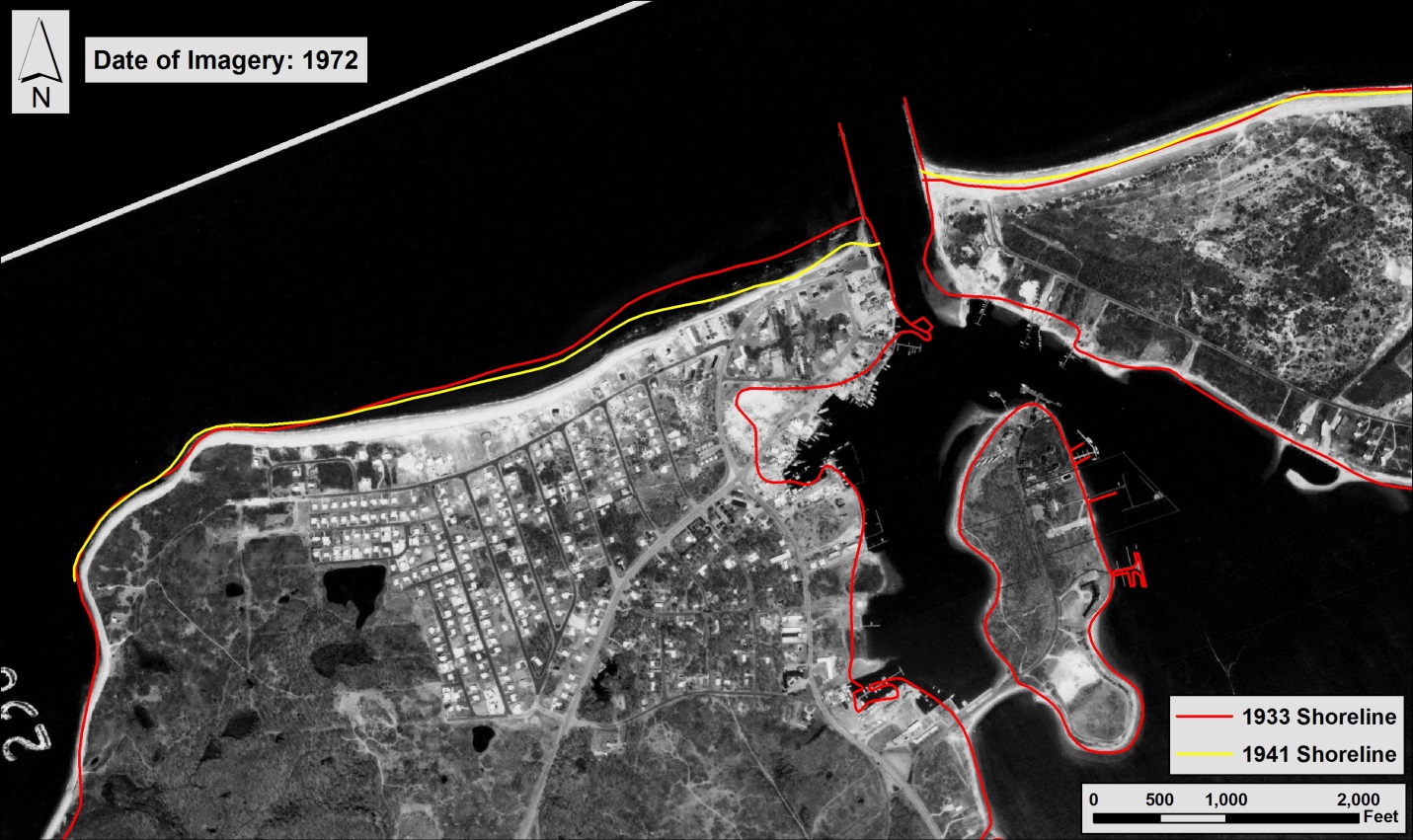Shoreline and Wetland Change Assessment
Shoreline changes document subaerial dynamics of the land-water boundary in response to various coastal processes, particularly those associated with storm events. Applied Coastal personnel specialize in quantification and interpretation of historical trends in shoreline position, bathymetry, and wetland area relative to dominant coastal processes. Innovative strategies have been developed to take advantage of state-of-technology advances in surveying, image analysis and interpretation, and geographic information systems (GIS), combined with a comprehensive and detailed understanding of the processes impacting coastal geomorphic change. Topographic and hydrographic surveys of coastal and nearshore environments provide a direct source of data for quantifying system response. Applied Coastal personnel analyze these data to evaluate coastal change trends at various locations along the U.S. coast in relation to normal incident coastal processes, storm impacts, relative sea-level change, and human modifications of the coast.
Capabilities
Drone imagery collection
GPS survey data collection
Shoreline interpretation and mapping
Wetland mapping
Land change quantification
Shoreline change assessment


